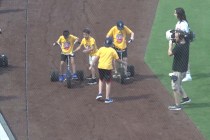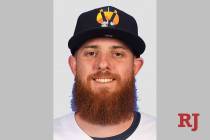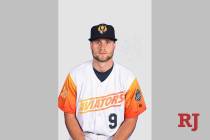Sandlot sluggers recall youth baseball without uniforms, adults

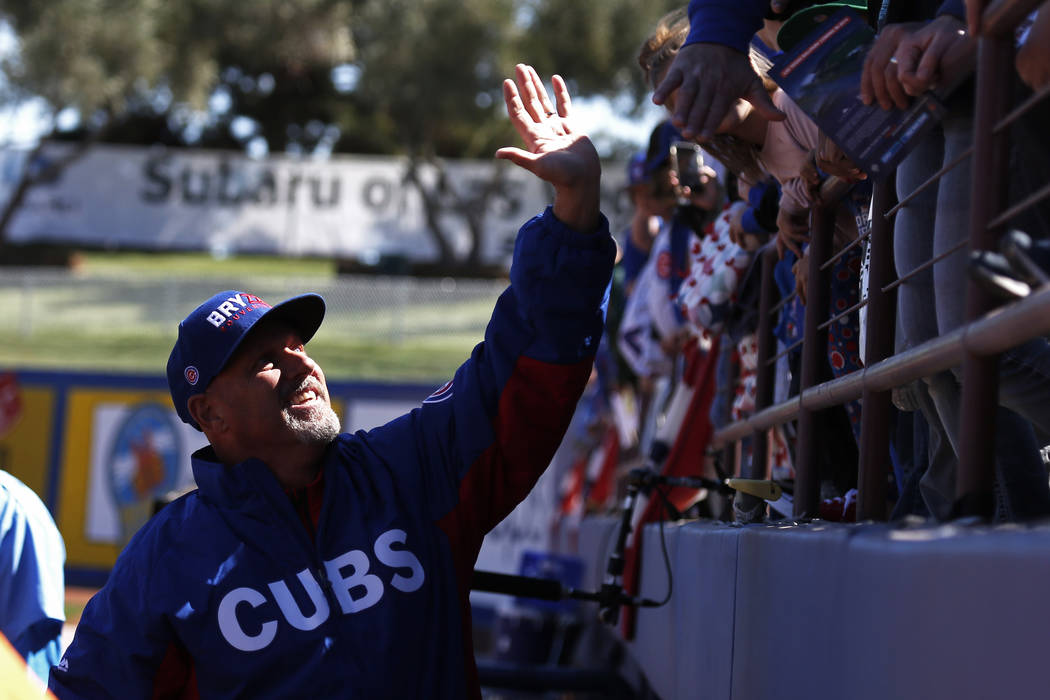
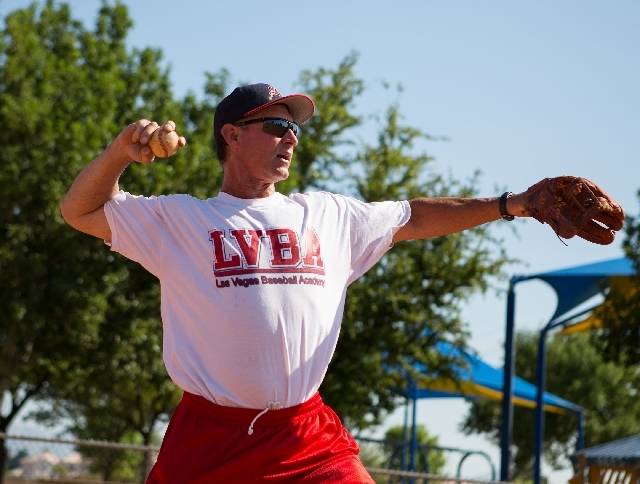












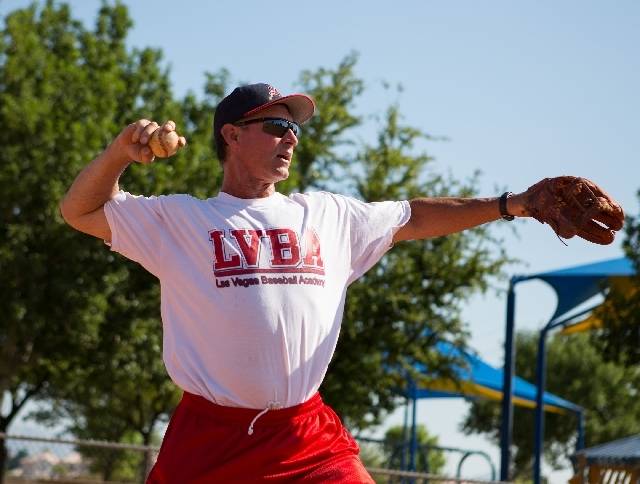

It was in 1939 that a man named Carl Stotz founded Little League Baseball, which now is renewing a World Series in Williamsport, Pennsylvania, that began in 1947.
In 1956, Stotz turned his back on Little League Baseball. He believed it had become too commercialized.
Carl Stotz died in 1992. It makes you wonder how he might have felt about today’s Little Leaguers strolling into Howard J. Lamade Stadium with alternate jerseys and personalized equipment bags and a TV contract that now shows regional games, too.
There was less angst and more innocence
before youth baseball was organized and orchestrated solely by adults, when kids simply would choose up sides on their own and play baseball on a sandlot until somebody knocked the cover off the ball or it got dark outside.
Ask any psychologist.
Or rent the movie “The Sandlot.”
Every neighborhood had a dusty patchwork diamond and a Scotty Smalls, the kid wearing the fishing cap who always was picked last. And a Benny “The Jet” Rodriguez and a Ham Porter and a Squints Palledorous and a Yeah-Yeah McClennan. And a grumpy old man who had a yard from which home run balls would never return.
And when somebody did smack a long one onto Mr. Mertle’s property, there was winsome Wendy Peffercorn, the lifeguard at the swimming pool … well, because as Las Vegas men of a certain baseball age will attest, this was before alternate jerseys and personalized equipment bags and video games.
Mike Martin
Mike Martin is 59 and owns and operates the Las Vegas Baseball Academy. He thoroughly enjoyed his cup of major league coffee, having played in eight games for the Chicago Cubs in 1986 and caught the final out of fellow Las Vegan Greg Maddux’s first major league victory.
It all started on a sandlot in Oregon that was harder than the outfield wall at Wrigley Field during springtime before the ivy grows in.
“It was like playing on I-95,” Martin said of the field at Seth Lewelling Elementary School in his native Milwaukie. “My dad dragged the infield using a Chevy Corvair.”
Bases that resembled pillows were used for official games, Martin said. But in pickup games, paper plates or the new kid’s hat were acceptable substitutes.
He said many lessons were learned playing sandlot baseball, the most important of which was the kid whose parents had the swimming pool batted cleanup and was always right when disputes arose, or you weren’t invited to go for a dip when it was hot outside.
“We’ve taken the imagination and creativity away from kids,” Martin says of choosing sides and making rules without adult supervision. This was never more true than when baseball was played in the vicinity of a babbling brook, he said.
“My neighbor had a big backyard, and he lived on a creek with wooden fences, and we would use a Wiffle golf ball and a broomstick handle (for a bat). If you hit a line drive against the fence, it was a home run,” Mike Martin recalled.
“If you hit it over the fence or into the creek, you were in trouble, because you had to go chase it.”
Mike Bryant
While most people only know Mike Bryant as being the father of 2016 National League MVP Kris Bryant of the Chicago Cubs, and having taught his son the slight uppercut that results in baseballs flying over ivy-covered walls, he once was a pretty good ballplayer himself.
Mike Bryant made it to Double A with the Boston Red Sox. He played sandlot ball at Kinsley Field in Acton, Massachusetts. The bats had wooden screws in the handles and electrician’s tape to hold them together; the balls were either beaten to a Deadball Era pulp or had a rubber coating so you could play in the rain.
“We would meet in the morning, we’d break for lunch,” said Bryant, 59. “Everybody would ride downtown with their gloves on the handles of their bicycles, go get a candy bar. We’d come back and play again until dinner. Everybody would eat real fast, and then you’d go out again and play until dark. It was awesome.”
Unlike many sandlot ballgames, the ones of Mike Bryant’s youth rarely lacked for players.
“Twenty-five kids would come down,” he said. “We had guys at every position and subs on the bench.”
Bryant said there were only three rules: No arguing. No bullying. And when this big kid named Dave Nichols came up, everybody play deep.
“He’d lose the balls all the time (with home runs),” Bryant said. “We’d have to go on a massive manhunt in the woods, and we’d find some of the rattiest balls. Some of the covers were off.”
“I remember one day this kid showed up with a brand new ball,” Mike Bryant said of a rarely witnessed sandlot baseball miracle. “It was amazing.”
Don Logan
Don Logan didn’t go straight from a sandlot in tiny Tonopah to being Las Vegas 51s president, although to some it might seem like it. The cow pasture in “Field of Dreams” made the dusty street on which he and his boyhood pals knocked the cover off the ball look like Yankee Stadium.
There aren’t many cornfields in Nye County for ballplayers to come wandering out of, Logan said. So when the local Little League had dibs on a more traditional sandlot called the Old School, sides were chosen on University Street in front of the Logan family home.
“It was a dirt street, a couple of hundred feet long, probably wide enough for three cars,” Logan said. “There was a propane tank on the third-base line and my basketball hoop on the first-base line. It was small and narrow. We would play 4 on 4.”
Infield chatter sometimes was muffled by the honking of a car horn.
“It was an active street,” Logan said. “ We had a pitch-back net, and you’d have to move it to let a car go through. But the killer was if a pitch missed the throw-back screen, it would cross another street and go down a hill. It would take five minutes to get it. We only had one ball.”
On a pockmarked field of dirt, that one ball soon lost its shape. And color.
“We got smart and started using rubber balls, but then they would get soft,” Logan said. “My dad had an old ball in the house he had gotten from the old Pacific Coast League; he had watched the Hollywood Stars play the old Los Angeles Angels. It was from the 1940s. But we needed a ball, so we put it in play.”
In another nod to the “Sandlot” movie, instead of a drooling English Mastiff named Hercules, the big kids in Tonopah who hit home runs came to fear a man named Mr. Johnson.
“At the Old School, Mr. Johnson’s house was in left field,” Don Logan recalled. “He was the (school) superintendent. Everybody was afraid to ask him for the ball.”
Kevin Higgins
In 1994, Kevin Higgins played all nine positions in one game for the Las Vegas Stars. This was the season after he played seven positions in 70 games for the San Diego Padres. Like many who grew up playing baseball on a sandlot, he was nothing if not versatile.
“It was kind of just dirt with a backstop,” the UNLV assistant baseball coach said of the rudimentary diamond at the Boise State Fairgrounds that spawned a pretty fair utility man.
Higgins was born in San Gabriel, California, so he does not receive official credit for being one of only 30 youngsters who played sandlot ball in Idaho who went on to play in the big leagues, the most famous being Harmon Killebrew.
But not even The Killer could hit the ball over the fence at the fairgrounds because there were no fences at the fairgrounds, Higgins said.
“No outfield fences, no side fences. It had a little bit of grass, but it pretty much was just a pasture of dirt. They had the rodeo grounds there,” the 51-year-old Higgins said. “Mom would pack a lunch and you’d go out and play for like 12 hours, until you had no light. Then you’d head home for dinner.”
That was on Monday through Saturday. Higgins said it was hard to get a game together on Sunday when many utility men in Idaho spend most of the day in church with their families.
“That was pretty much our over the line day,” he said of the baseball derivative that requires only three players a side.
“You know how it was — when baseball (season) was over, we played football, and when it got cold, then we moved inside and played basketball. And then when the sun started coming out, it was baseball season again.”
Larry Brown
Before he became a Clark County commissioner, Larry Brown pitched for the original Las Vegas Stars. Before that, he played football and baseball at Harvard. And before he strolled ivy-covered halls, he played sandlot ball in a green field between two homes — the Herseys and the Oldhams — in Norwood, Massachusetts.
“Home plate was the water cap on the sidewalk,” said Brown, 61. “First base was a shirt. Second base was an elm tree right on the property line. Third base was the Herseys’ front gutter.”
With only three or four men per side, second base extended was the foul line. One had to pull the ball. If you batted right-handed and hit a ball into the imaginary right-field corner, it was a foul ball. Or an out.
Games started with the captains alternating putting a hand atop the other’s on the bat handle. The captain who got the knob got last ups.
“That was critical,” Brown said. “These scores usually ended up 37-30. Not a lot of good pitching back then.”
When you were able to hit the ball over the pony wall made of stone in left field, Brown said you graduated to Wilson Street playground in a city park that had a Babe Ruth field carved from a thicket of woods.
If only a few kids showed up, Brown said “screen ball” was played: You turned around and faced the backstop that had four evenly spaced bars of demarcation: single, double, triple, home run.
And if nobody showed up to play, Larry Brown said you found a ball and a wall to throw it against and used your imagination. These were the Glory Days of youth, and you hoped that Graig Nettles wouldn’t get you in the bottom of the ninth like in that Bruce Springsteen video.
Contact Ron Kantowski at rkantowski@reviewjournal.com or 702-383-0352. Follow @ronkantowski on Twitter.




